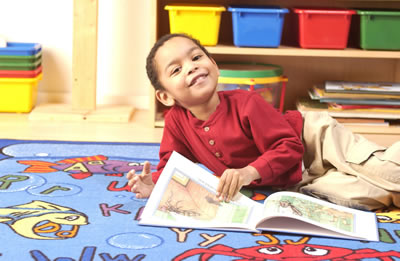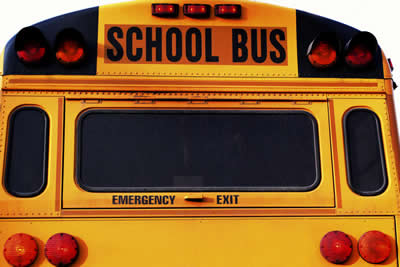|
|
|
It's hard to believe that we are halfway through summer already! This month's newsletter focuses on getting our kids ready for the return to school.
Some individuals thrive in the school environment; yet others struggle with the many challenges that await them. Such challenges include, but are not limited to: new environment, transitions, sensory stimulation, and working with peers.
We hope that the resources and tips offered in this newsletter will provide support for you as you help your youth with this significant transition.
|
|
|
|
 Back to School Books Back to School Books

Soon, it will be time for students to head back to school. Below are some books, tip sheets and other strategies that may help the individual that you work with get "Back to School."
PICTURE books for elementary-aged students:
- I Am Too Absolutely Small for School by Lauren Child
- First Grade Jitters by Robert Quackenbush
- Little School by Beth Norling
- Pete the Cat: Rocking in My School Shoes by James Dean and Eric Litwin
- When you go to Kindergarten by James Howe
- The Berenstain Bears Go to School by Stan and Jan Berenstain
|
| | |
|
|

Making a "BACK TO SCHOOL" Social Story
(www.pediastaff.com)
THE GOALS:
To make the activity familiar so the child knows what to expect. This is done as a personalized storybook for your child.
WHAT YOU NEED:
- Four or five photos about the activity. For example, if it is preparing your child for a new school, you need photos of the school, your child's classroom, your child's new teacher, your child dressed in their school uniform with their bag and so on. Each photo will go on one page of the social story.
- A binder to bind the pages into a book or you can put each page into a clear display folder to make the book that way.
HOW TO DO IT:
Make a front cover in your child's favorite color with a photo of them on it and the title of the story, e.g. (CHILD'S NAME) GOES TO SCHOOL. Then, each page following will have a photo and one or two sentences to explain that photo, e.g. Page 1: (child's name) is going to school today. Photo of child dressed ready for school (maybe plain clothes or in school uniform) with their schoolbag.
Page 2: Photo of how child will get to school (child's name) goes on the bus or with Mom and Dad in car (whatever is applicable) to the school.
Page 3: Photo of school. (child's name) arrives at school. There are many other children at school.
Page 4: Photo of classroom with teacher. Here is (child's name) teacher. His/her name is (XXXXX). If there is a teacher aide who will be caring for your child, put their photo in and their name too.
Page 5: Photo of parent waving goodbye to your child. Bye now! Mom will come back in at 3.00 o'clock. (show the clockface if your child understands the concept of time) or Mom will come back after lunch or in a little while, whatever is applicable. Then: Have a great day!!!
A second social story could also be done about the actual routine at the school. There could be a social story about meal-times at the school. There could be one about each subject that is taught and what happens. The possibilities are endless. The most important thing is to keep each story simple so your child can understand what is going to happen and thereby lessen their anxiety levels (and your own)!

|
|

For students that are returning to school and for new students:
www.autismspeaks.org
- Visit the school and tour all rooms.
- Take pictures on the tour.
- Take pictures of the teachers, janitorial staff, school nurse, cafeteria helpers.
- Try and get a daily schedule for the student.
- Need to change clothes for physical education class?? Practice this skill at home as well as in the locker room.
- Talk to the individuals about the process of going to school.
- Have the child help shop for school supplies.
- Avoid overload as best as possible.
- Color code notebooks and materials.
- Practice going to the bus stop.
- Set aside quite time at home.
- Use a social story to help with the transition back to school.
[see example on left to make your own social story for back to school:(www.pediastaff.com)]
|

|

Tips for parents:
www.autismspeaks.org
- Get medical information in order.
- Who will be the emergency contacts?
- If your child has dietary needs, firm up how that will be managed in the school environment.
- Allow more time for everything during the first couple of weeks.
|
|
|
|
 Upcoming Upcoming
Webinars |
8/28 @ 9:30am EST and 9/11 @ 4:00pm EST
Inclusion and Related Best Practices
in the education of students on the autism spectrum
Training Summary:
Education law intends that "Special education is a service, not a place." It requires that students receive the "supplementary aids and services" they need to attend their neighborhood school, and that they have access to and make meaningful progress in the general education curriculum. This is good news for students with autism, who learn social and communication skills best in natural settings with typical peer models, and who thrive cognitively and academically when their curiosity is engaged with interesting, age-appropriate subjects and materials. Knowledge barriers and attitudinal barriers to the inclusion of students with autism in the general education classroom can be overcome through better awareness and use of classroom accommodations and supports, differentiated instruction, curriculum modification, and the infusion of "specialist" knowledge (such as speech/language and occupational therapy) into the classroom rather than confining them to "pull out" rooms. A large and growing research base attests to the benefits of inclusion for students with and without disabilities, and to better adult outcomes for students who were educated in inclusive environments.
| | To register for webinars, go to: https://yapinc.webex.com/ |
|
The information and points of view contained in this newsletter are intended only to stimulate interest about topics of possibly shared concern. Youth Advocate Programs, Inc. ("YAP") does not represent or endorse the accuracy, completeness, timeliness or reliability of any information contained in, linked, or otherwise accessed through this newsletter. This newsletter does not contain medical advice and YAP accepts no responsibility for any errors (or omissions) contained in this newsletter.
|
|
|